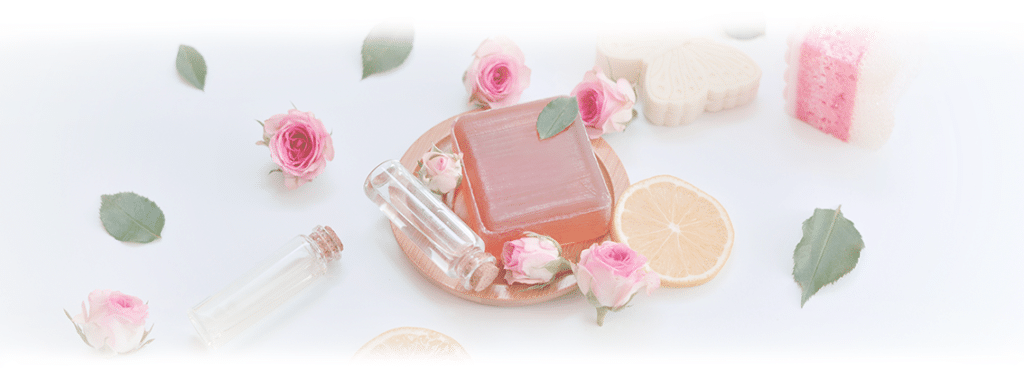Black friday special sales! 20% off a selection of products at checkout with coupon code.
BLACKFRIDAY20
BLACKFRIDAY20
The skin barrier is the outermost skin layer that protects us from harmful, external factors known to cause premature skin ageing, whilst helping to maintain skin health and levels of hydration. It acts as self-renewing, protective shield. In this article we will discuss why the skin barrier is so important and ways to maintain it’s protective function.

The skin barrier is also known as ‘the acid mantle’, due to its lower pH value (skin pH is a measure of skin acidity) compared to the rest of the body. This helps prevent harmful bacteria, viruses, or fungi from entering the body via the skin and causing infections or damage.

The skin consists of three main layers: the epidermis (upper layer), dermis (middle layer), and hypodermis (lower layer). The skin barrier is located in the stratum corneum, the uppermost part of the epidermis, so is the only skin layer that is exposed to the environment.

The stratum corneum is composed of cells called corneocytes interconnected by skinlipids. Such a structure that resembles a brick and mortar is held together as a barrier, preventing water loss and protecting the skin from external factors. As the corneocytes are able to retain water, they expand outwards and prevent the formation of microscopic lesions between them.
This is important because any cracks would allow for trans epidermal water loss (TEWL) and act as a gateway for bacteria (and other pathogens) to enter the body – which in turn could make the skin dry and irritated.
The skin barrier has three general roles:

There are several external environmental factors that act to harm our skin barrier, so it is vital that we understand what they are to find preventative measures and avoid subsequent damage. Such impacting factors include:

Blue light: when using screens, such as phones or laptops, we expose our skin to blue light, which causes the skin cells to reduce in size and die out, leading to a loss of elasticity and potentially hyperpigmentation.
Exfoliation: when exfoliating, we use a lot of pressure or products with active ingredients that cause mechanical or chemical exfoliation (eg. Lactic acid), the skin barrier becomes damaged, the skin becomes red and irritated followed by increase in Trans Epidermal Water Loss (TEWL).
UV A/B Exposure: UV Sun rays generate free radicals that cause oxidative stress on the skin, leading to premature skin photoaging and the formation of wrinkles.
Pollution: pollutant particles such as dust or smoke damage the skin barrier, dehydrate the skin and can contribute to acne flare ups.
Ageing: as we age the skin barrier’s structure naturally changes with time becoming weaker and losing its efficiency at retaining moisture. The most compact skin barrier is observed in babies.
Thankfully, there are ways to repair your skin barrier if it has become damaged. However, it may take between several weeks to months to fully heal, depending on the severity of the damage. When the skin barrier is broken, it loses its ability to retain water and other natural nutrients required to keep the skin healthy. So, to restore the skin barrier, you have to replenish its stores of natural active ingredients, which it uses to support its self-renewing properties.
These active ingredients include:
A simple way of replenishing the skin’s nutrient stores is by using the cosmetic products enriched with the above ingredients into your skin care regime.

Now that the skin barrier has been restored to its original state, it is important to keep it in healthy condition. Once again, this only requires simple steps that can be easily followed:

UV Protection: when spending time outdoors, it is advised to always apply sunscreen of at least SPF 30 and wear a widely brimmed hat and sunglasses when exposed to the sun.

Allergen-free cosmetic products: certain cosmetic products may increase the skin’s sensitivity, altering it’s self-repairing function, so it is best to avoid known allergens in cosmetic products.

Skin pH: research has shown that the skin favours acidic environment to help maintain its barrier strong and healthy. Application of cosmetic products that are pH balanced can be helpful for maintenance of a healthy skin barrier.

Hydrate: intake of sufficient amount of water during the day can improve the body’s general hydration status. However, this has no or little impact on the skin hydration levels.

Use lukewarm water: when cleansing the face with water it is ideal to make sure its temperature is like room temperature because extreme temperatures each way (hot or cold) can irritate the skin and cause dehydration.

Simple Skincare routine: by following a simple routine, such as ‘cleanse, tone and moisturise’, your skin still gains the benefits without the removal of any essential substances.

Skin cleansing: use mild and gentle face cleansers, without applying too much pressure on the skin.

Reducing Stress: both physical and emotional stress have been associated with causing various skin disorders, e.g., eczema. Undertaking stress-relieving activities will reduce the likelihood of developing such conditions.

Avoid sugar in your diet: Sugar has been proven to initiate the oxidative stress and negatively affect the skin health.

Stop smoking: smoking increases the appearance of signs of skin ageing such as wrinkles and fine lines.
Juliet He wants to talk frankly with you and show you something, you will like it. Click Here: http://www.google.com/amp/s/teens.page.link/go
1хбет промокод при регистрации https://justinekeptcalmandwentvegan.com/wp-content/pages/code_promo_76.html
промокод 1хбет при регистрации https://justinekeptcalmandwentvegan.com/wp-content/pages/code_promo_76.html
To get a bonus of 150$, make any exchange in the Zeus Exchange using Promo code “CODE-2023-GO08”
промокод на 1xbet при регистрации
Betwinner промокод https://vsiknygy.net.ua/wp-content/pages/betwinner_promokod_2020.html
Everything is very open with a precise clarification of the challenges. It was really informative. Your site is very helpful. Thanks for sharing!